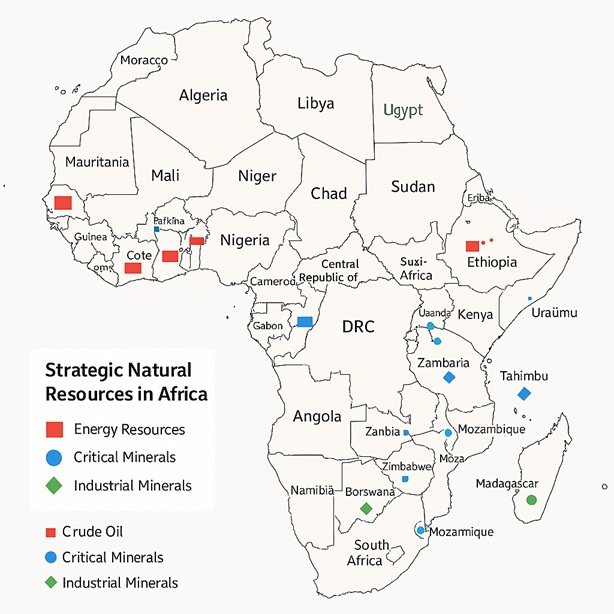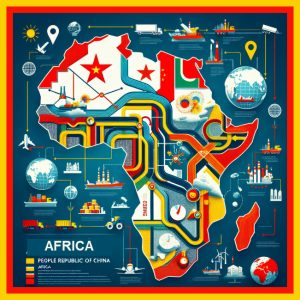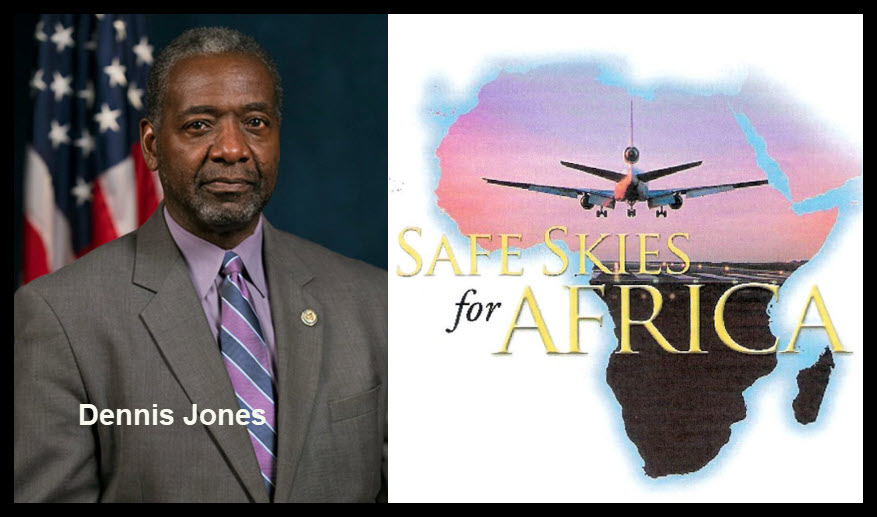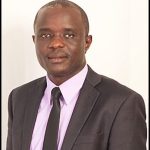Africa’s desperate aviation safety needs and its Strategic Natural Resources = DEAL???

The current Administration has shown an exceptional awareness of the need for the US to secure strategic natural resources. The President’s career includes a long list of deals in which there have been exchanges of value—usually his offering assets needed badly by the other side of the transaction in trade for goods services sought by his side. #45-#47‘s The Art of the Deal explains his skills in such transaction.
The Daily News (Tanzania) has published the attached article that highlights that the countries of Africa desperately need— AERONAUTICAL AND ASSOCIATED ENGINEERING EDUCATION and training of their aviation safety cohorts to be able to address Africa’s burgeoning air transportation sector.
The author makes a convincing case that without such an initiative huge economic opportunities likely will not be attained. The hard numbers:
Passenger traffic is expected to MORE THAN DOUBLE, reaching 345 million annually by 2043
- Domestic air traffic will increase more than fourfold over the next two decades
- Aircraft demand: BOEING[1] estimates Africa will need 1,025 new airplanes to meet rising demand and replace aging fleets
- Annual growth rate: Projected at 4%, surpassing the global average
- Economic impact: Travel and tourism expected to grow at 4% annually, supporting nearly 39 million jobs by 2034
Africa’s growth passenger rate exceeds other continents raising it as a target for US universities[2] to provide aviation technical education and a target for Boeing.
[ Collateral concerns about Africa that are relevant to this strategic issue: China’s investments in Africa have reached record-breaking levels in 2025, both in scale and strategic focus. The People’s Republic of China (PRC) is now Africa’s largest trading partner and infrastructure financier, with its Belt and Road Initiative (BRI) pivoting heavily toward the continent. $50.7 billion pledged under the 2025–2027 Beijing Action Plan (FOCAC summit). China’s approach has evolved from extractive industries to long-term industrial capacity building, aligning with Africa’s Agenda 2063. The PRC is also removing tariffs on imports from all African countries with diplomatic ties, deepening trade integration.
]
Why is the PRC so invested in Africa? Stated more in the first- person perspective- why should we be certain to keep Africa as a source of the following strategic natural assets for the US:
-
-
-
-
- Rare earths,
- cobalt,
- lithium,
- uranium,
- platinum group metals,
- graphite,
- bauxite
-
-
-
and
-
-
-
-
- manganese
-
-
-
Africa is the most RESOURCE-RICH, YET UNDERUTILIZED CONTINENT, especially in minerals critical for green technologies.
Offering to support Africa’s emerging aviation industry is NOT NEW. In fact, from 1998 to 2019, the then NTSB’s Managing Director, DENNIS JONES, offered a series of programs called the SAFE SKIES FOR AFRICA[3]. SSFA played a pivotal role in elevating safety practices, fostering institutional partnerships, and enhancing regional air navigation systems Jones’ syllabus offered the following
- Raise ICAO compliance: Help African nations meet International Civil Aviation Organization (ICAO) safety standards
- Airport security upgrades: Improve security at 8–12 key airports within three years of launch
- Navigation modernization: Introduce satellite-based navigation and communications technologies
- Capacity building: Host regional conferences, training programs, and safety assessments with African civil aviation authorities
- Training and technical support: Thousands of African aviation professionals—including pilots, engineers, and regulators—benefited from U.S.-led workshops and safety audits
- Institutional collaboration: The U.S. Department of Transportation (DOT), Federal Aviation Administration (FAA), and National Transportation Safety Board (NTSB) worked closely with African agencies
- Safety improvements: Contributed to a measurable decline in aviation accidents across participating countries
- Economic ripple effects: Safer skies helped boost tourism, trade, and foreign investment by improving air connectivity
SSFA might not be the model to help Africa’s aviation safety conundrum.
A deal between this Administration and the countries of Africa could result in the following positive results:
- providing Africa with critical information about aviation safety
- Future African aviation leaders will have the exceptional education from the US universities
- enhancing the continent’s safety record; it is estimated that 500,000 American passengers visited Africa in 2024 and that number is expected to rise
- this academic relationship and greater US travel to Africa should diminish the PRC’s growing influence.
- the likelihood that Boeing will find the continent’s airlines more receptive to their sales which also results in greater US jobs
- THE US CAN SECURE ITS ACCESS TO STRATEGIC NATURAL MINERALS—
- Rare earths,
- cobalt,
- lithium,
- uranium,
- platinum group metals,
- graphite,
- bauxite
and
- manganese
This package should nicely fit the key lessons of the Art of the Deal- think BIG, protect from the downside/leverage from your strengths, know your market, among others.
Engineering competence key to aviation safety
AIR Tanzania Boeing 787 packed at Dar es Salaam’s Julius Nyerere International Airport.
DAR ES SALAAM: IN the rapidly evolving landscape of global aviation, AFRICA stands at a crossroads. The continent’s potential is vast, but so too are the challenges.
As we strive to elevate aviation safety standards, one truth becomes increasingly clear: Technical competence is not optional it is foundational.
Across Africa, we have witnessed the consequences of UNDER INVESTMENT in ENGINEERING EDUCATION AND TRAINING.
Aircraft maintenance errors, inadequate oversight and insufficient regulatory enforcement have too often led to tragic outcomes.
These are not merely technical failures they are failures of systems, of leadership and of vision.
The stakes are high
Aviation is not just a mode of transport, it is a lifeline for economic development, regional integration and global connectivity.
In many African countries, air travel is the most efficient way to bridge vast distances and connect remote communities.
Yet, the promise of aviation is undermined when safety is compromised. Every incident, every accident, chips away at public trust and investor confidence.
It sends a message that WE ARE NOT READY, NOT EQUIPPED, NOT SERIOUS.
This is not a narrative we can afford to accept. Africa’s aviation sector is projected to grow significantly over the next decade, with increased passenger traffic, expanded fleets and new infrastructure investments.
BUT GROWTH WITHOUT SAFETY IS RECKLESS. Expansion without competence is dangerous. If we are to seize the opportunities ahead, we must first confront the deficiencies that hold us back.
Engineering competence is a strategic imperative
To change course, we must ENGINEER COMPETENCE. This is more than a slogan— it is a strategic imperative. It means investing in rigorous academic programmes that produce not just graduates, but professionals.
It means fostering industry partnerships that bridge the gap between theory and practice. It means creating pathways for continuous professional development, so that engineers remain current, capable and confident. Competence is not static. It must be cultivated, tested and renewed.
In aviation, where the margin for error is razor-thin, competence is the difference between safety and catastrophe. We must equip our engineers not just with tools, but with judgment. Not just with knowledge, but with wisdom.
The role of government, academia and industry
GOVERNMENTS MUST PRIORITISE AVIATION SAFETY AS A STRATEGIC NATIONAL INTEREST. This requires policy frameworks that support education, certification and oversight.
It requires funding for institutions that train engineers, inspectors and technicians. And it requires political will to enforce standards—even when it is inconvenient.
Universities must align their curricula with real world demands. Too often, engineering programs are disconnected from the realities of the hangar, the runway, and the control tower.
We need educators who understand the industry, and industry professionals who contribute to education. Internships, apprenticeships and joint research initiatives must become the norm, not the exception. Industry leaders must mentor, train and empower the next generation.
This is not charity-it is survival. The aviation sector cannot thrive without a pipeline of skilled professionals. Companies must invest in training, support certification and create cultures of excellence.
They must recognise that safety is not a cost—it is a value. Regulators must enforce standards with consistency and courage.
This means resisting political pressure, rejecting shortcuts, and holding all stakeholders accountable. It means building institutions that are independent, transparent and technically competent. Regulation is not about punishment—it is about protection.
Building systems that sustain talent
Africa does not lack talent. It lacks systems that nurture and sustain that talent. We must build those systems deliberately, urgently and together.
This includes regional cooperation, where countries share best practices, pool resources and harmonise standards. It includes leveraging technology to improve training, monitoring and reporting.
And it includes engaging international partners who can support capacity building without imposing one-size-fits-all solutions.
We must also address the brain drain that continues to siphon talent away from the continent. African engineers are sought after globally for their skill and resilience.
But too often, they leave because they cannot find opportunities at home. We must create environments where talent is valued, rewarded and retained.
A personal commitment
As Vice-President for the African Region at the International Federation of Airworthiness, I have had the privilege of working with professionals across the continent who are passionate about safety, excellence and progress.
I have seen firsthand the brilliance of young engineers, the dedication of educators and the resolve of regulators.
But I have also seen the gaps the underfunded programmes, the outdated equipment, the missed opportunities. This is why I believe so strongly in the call to engineer competence.
It is not enough to train engineers; we must build ecosystems that support their growth. It is not enough to talk about safety; we must institutionalise it. It is not enough to hope for change; we must lead it.
The future is ours to shape
Africa’s aviation future is not predetermined. It will be shaped by the choices we make today.
Shall we invest in competence, or continue to improvise? Shall we build systems, or rely on individuals? Shall we prioritise safety, or gamble with lives?
The answers to these questions will define our legacy. They will determine whether African aviation becomes a model of excellence or a cautionary tale.
With deep commitment to aviation safety in Africa, I encourage governments, academia and industry to unite in building a future of excellence.
Let us not only train engineers, let us engineer competence. The future of African aviation depends on our shared commitment to skill, resilience and readiness
The writer is International Federation of Airworthiness Vice-President (African Region)
Jared Ajwanga is an alumnus of City University London with an MSc Aircraft Maintenance Management currently based in Canada. Jared has previously worked with Qatar airway as an MOCC fleet support Engineer in charge of the Boeing Fleet, Kenya Airways as as Duty Control Engineer in charge of Line Maintenance Nairobi and a host of consultancy services in Europe and Africa. Jared is a licensed Aircraft Maintenance Engineer B1 certified on Boeing 777-200(Rolls Royce engine)/300(GE90 engine), B787-8 (GNX-1B), B767-300ER (CF80 engine), Airbus A350 I( RR Trent XWB) and Embraer 170(CF 34-8)/190 (CF 34-10)… Aviation safety has been his passion, in the year 2013 Jared won the AJW masters sponsorship in London. Jared is a Safety Management Systems Implementation and control specialist. His keen interest is in safety and procedures compliance, he played a critical role on qualification and approval of Kenya airways as an EASA 145 maintenance organization. An instructional techniques and design facilitator, currently championing international standardization of statutory licensing qualifications for maintenance engineers. He has been instrumental in partnering with European EASA 147 training organisations to offer EASA part 66 license exams in Africa.
[1] The White House has announced a number of huge foreign (national) airlines purchases of Boeing aircraft in the tariff/industrial negotiations.
[2] As of 2025, approximately 70 U.S. colleges and universities offer degrees in aerospace and aeronautical engineering, according to College Factual’s rankings. These programs span bachelor’s, master’s, and doctoral levels, and include both aeronautical (aircraft within Earth’s atmosphere) and astronautical (spacecraft beyond it) specializations. EduRank identifies over 796 U.S. institutions that have published research in aerospace engineering, though not all of them offer formal degree programs.
[3] “One of the speakers, a human factors investigator, outlined investigation process and explained how examine all factors—machine, human, and environment—are examined to understand an accident and make recommendations to prevent it from happening again. The speaker highlighted several accidents investigated in which human factors played a role. But even when a probable cause statement focuses on factors not normally associated with human performance, it’s impossible to totally remove humans from the accident chain.He noted that to prevent accidents and improve the safety of air travel in Africa, it’s important that operating aircraft are air worthy, meaning that all structure, systems, and engines are intact and maintained in accordance with the regulations. To emphasise this point, NTSB chief presented a series of case studies discussing air worthiness issues and offered guidance on ways to classify damage to aircraft.






